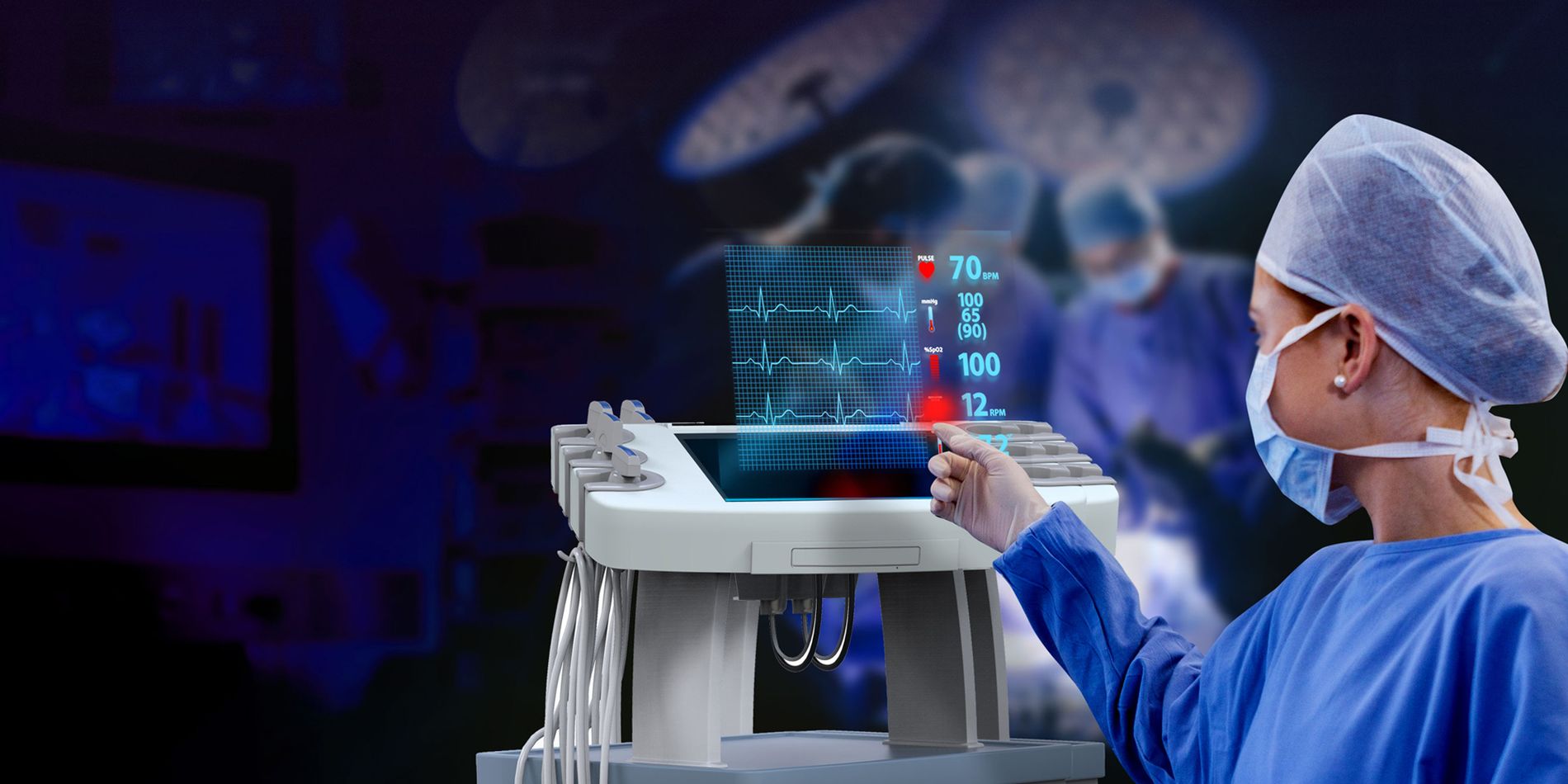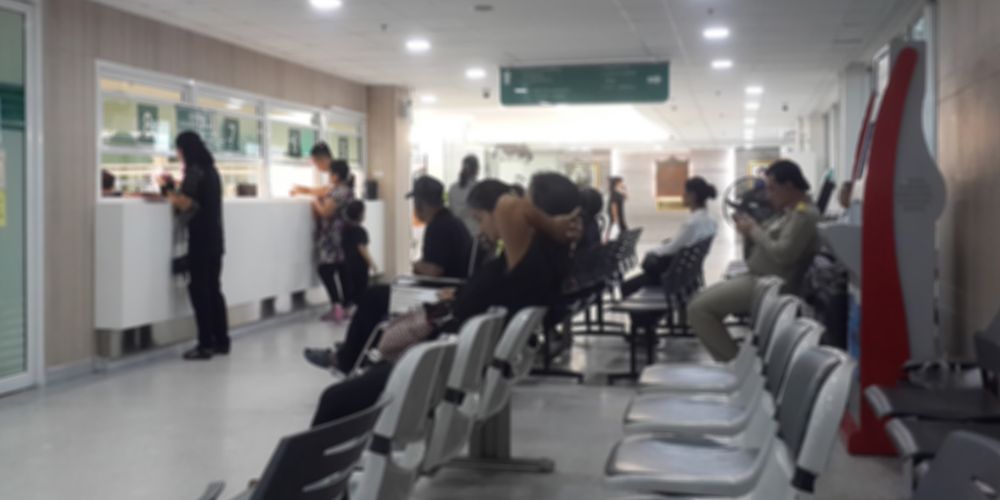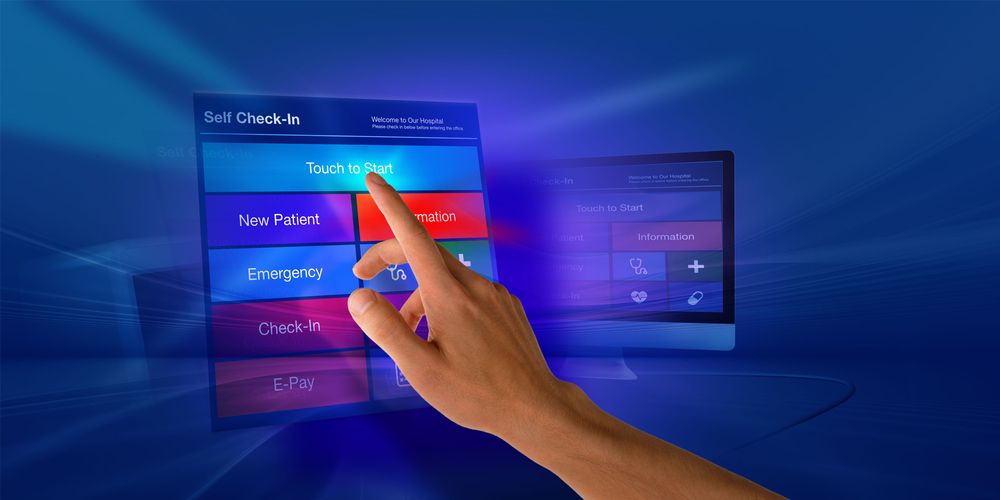Cookie settings

Medical Equipment and Patient Monitors Employ Holographic Technology to Reduce Pathogen Transmission in Hospitals.
The introduction of transformative holographic equipment for medical carts, patient monitors and other hospital equipment will help protect patients and medical staff by virtually eliminating surface contact on high touchpoint devices in hospitals.
It is fair to say that after living through a pandemic, most of us now behave somewhat differently when visiting public spaces. We think twice before touching common surfaces, we keep a greater distance when queuing, and even go so far as to avoid some crowded areas completely.
For some people, this avoidance is not driven by cautionary consideration, but a compulsion caused by post-pandemic anxiety. Post-COVID hospital avoidance is especially true for those that associate trauma caused by COVID19 with medical institutions, whether it be their own experience or the thought of losing a loved one who was admitted during a very pestiferous time.
The CDC estimated that 41% of U.S. adults avoided medical care during the pandemic because of concerns about COVID19. Results from another study which analyzed data from approximately one million national hospitals around the U.S. reported lower admission rates were somewhat due to purposefully postponed elective surgeries, but worryingly, many hospitals reported declines in admissions for acute medical illnesses such as stroke and acute myocardial infarction. It also concluded that widespread uncertainty and public anxiety caused by fear of contagion was a key reason for people with acute medical illness to avoid a visit to the hospital, despite whether their ailment was life threatening or not.

Hospital avoidance is continuing to have implications for public health practice. Routine care avoidance increases the risk of missing opportunities for management of chronic conditions or early detection of new conditions which might worsen outcomes. This behavior is also predicted to increase morbidity and mortality long into the future.
Responsible and conscientious hospitals and public health authorities around the world are now taking greater accountability in encouraging people that need medical assistance to seek help. This is where the adoption of ground-breaking holographic technology can assist.
Futuristic Technology Transforms Medical Carts and Patient Monitors into Contact-free Zones.
Mobile medication and point-of-care computer carts are indispensable tools in the modern healthcare facility however, they can also be a vector for germs and other infectious agents. A recent study found that 43% of physical interaction between healthcare providers and their patients involve touching a patient and a mobile medical cart. Other research concluded that the average computer and laptop keyboard carries over 3.5 million colony-forming units per square inch. These studies, combined with the toll of healthcare-associated illnesses which drive the average annual US hospital budget to over $28.4 billion, highlight the importance of using touch-free devices.
HoloMed™ is a line of holographic inserts developed by Holo Industries, designed for medical carts, patient monitors and other medical products. When installed, HoloMed will transform traditional surfaces and touchscreens into holographic displays that can then be controlled with in-air interactions, thus protecting patients and hospital staff by virtually eliminating surface contact. Without the need to touch shared surfaces, HoloMed will help to reduce both the transmission of Health Associated Infections (HAIs) and patient anxiety from reducing touchpoints in hospitals.

Holographic Human-Machine Interaction
This new Human-Machine Interaction (HMI) is made possible with holographic touch, a transformative new technology that provides accurate and responsive mid-air interaction without special lighting, glasses, or headgear. Anything a user can do on a touch display such as an iPhone or iPad, they can now do in mid-air: touch, pinch to enlarge, zoom, scroll, or swipe – even with surgical gloves. Holo Industries, the creators of HoloMed, chose Neonode Touch Sensor Modules to enable the in-air interactivity as the light-reflective technology used in the sensors allows users to make multi-touch interactions with projected images, whether it be with fingers, gloves or pens.
“At Holo Industries we understand the importance of keeping medical equipment clean and free of viruses, microbes, and other infectious agents. We also know that the safest way to interact with any surface is not to touch it in the first place," said Glenn ImObersteg, Holo Industries CEO. "For this reason alone, we believe our innovative pathogen-free Holographic Touch technology and HoloMed products will eventually become a standard in every hospital and clinic.”
Read More
View the full press release from Holo Industries.
About Holo Industries LLC
Holo Industries is the inventor of Holographic Touch™, a disruptive technology that combines holographic plates, optics, sensors and proprietary software and hardware components to create highly responsive mid-air interaction. Holo Industries is the developer and supplier of interactive holographic systems, with prototypes in circulation in many of the major Fortune 500 companies in the automotive, hospitality, banking, medical, retail and transportation sectors.
Visit www.holoind.com
About Neonode Touch Sensor Modules
Holographic technology uses mirrored projection plates to redirect light to create a floating image. Couple projected images with our Touch Sensor Modules and you can create fully interactive in-air holograms.
Contact us to learn more.